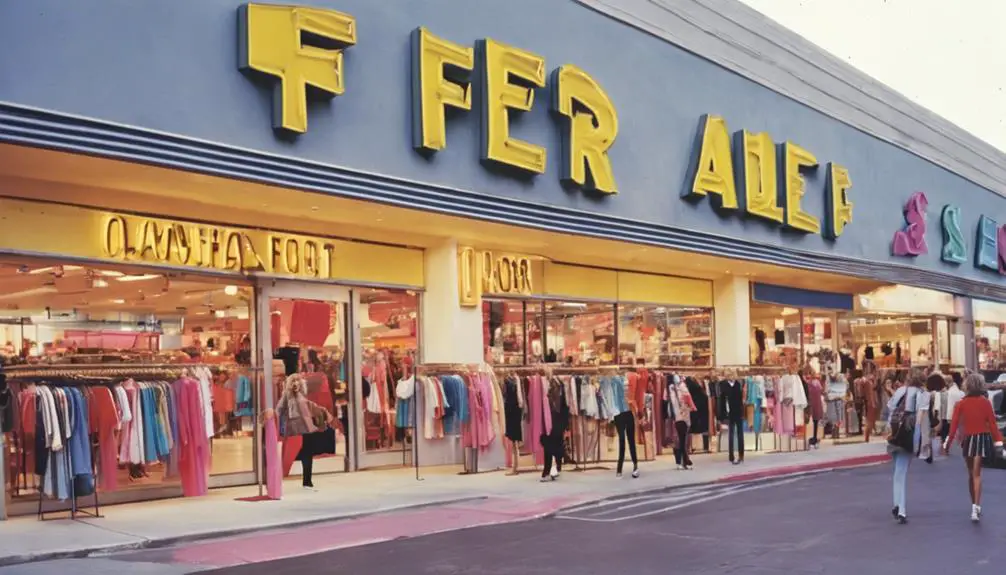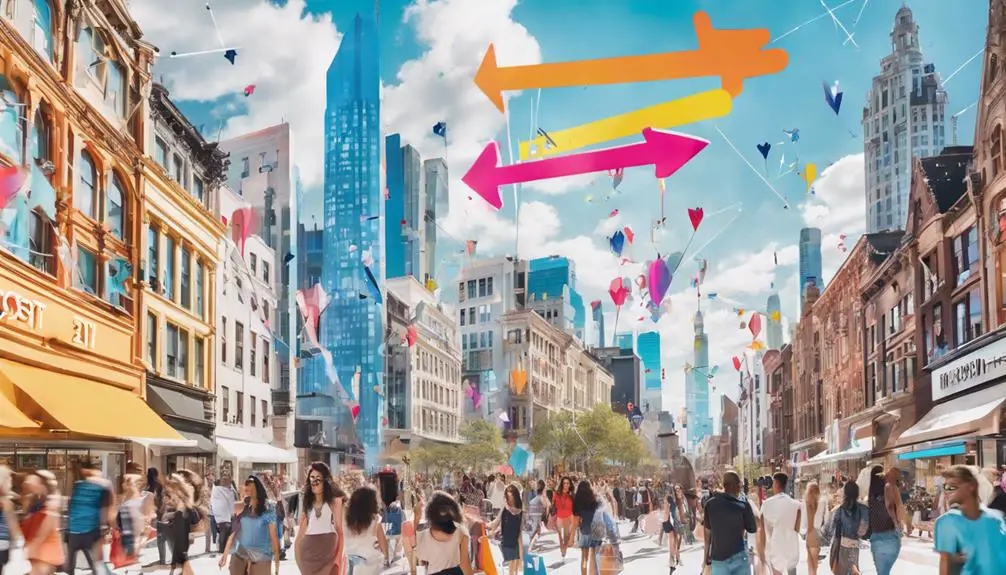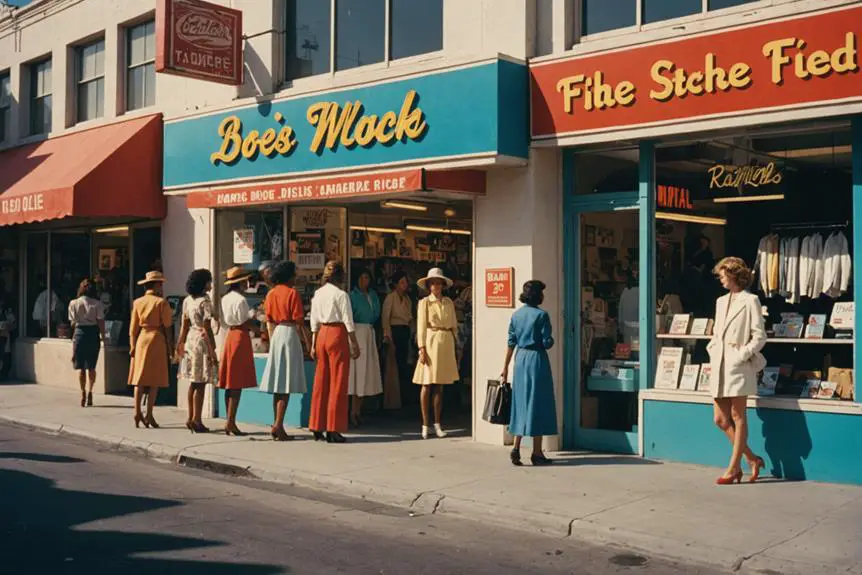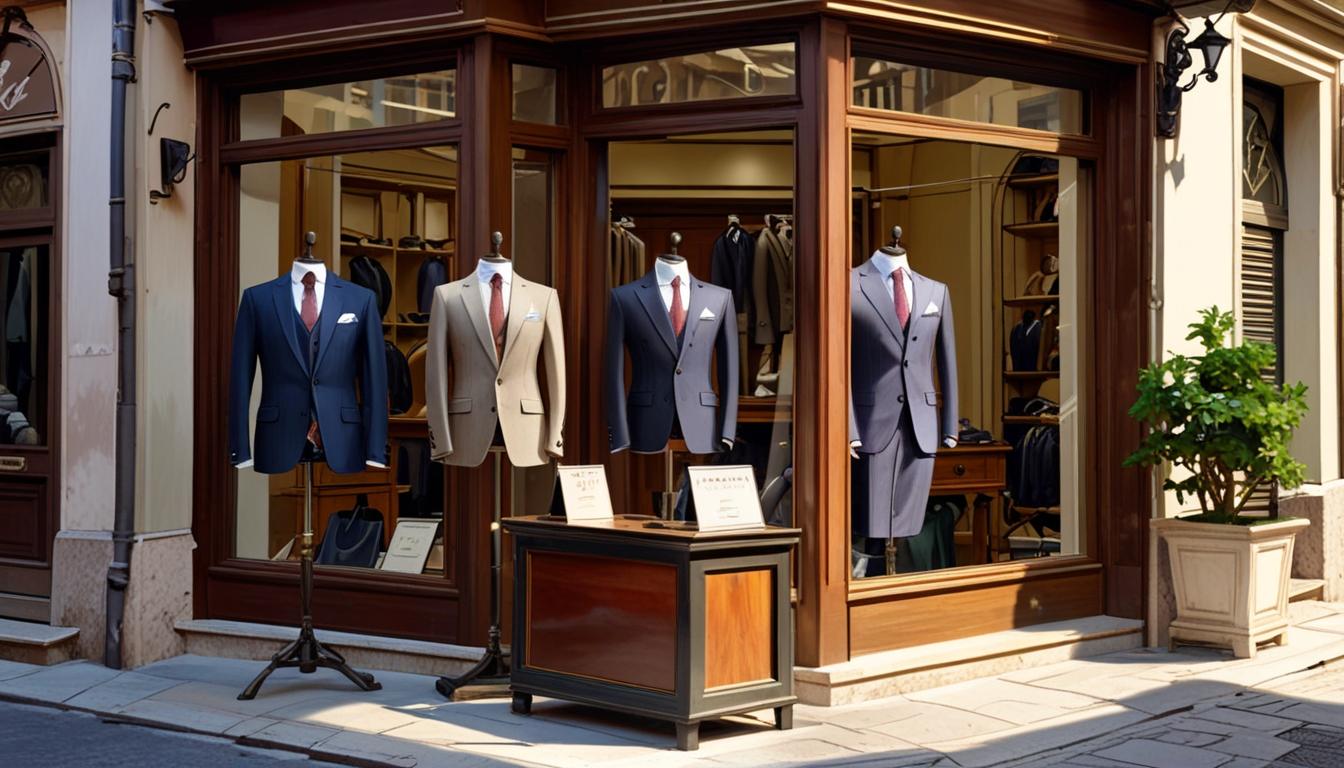You might be surprised to learn that Forever 21, now a global retail giant, began its journey in 1984 with a modest store called Fashion 21, founded by Korean immigrants Do Won and Jin Sook Chang. With just $11,000 and a vision, they opened their first location in Highland Park, Los Angeles, catering to the Korean American community. The initial success was staggering, but what happened next would set the stage for a remarkable transformation and expansion that few could have predicted. Curious about how they managed such rapid growth?
Founders' Journey to America

Arriving in America in 1981, Do Won and Jin Sook Chang faced significant challenges as they sought a better life for their family. Immigrating from South Korea, they encountered financial hardships that tested their resilience and determination.
Working multiple jobs, including Do Won's roles as a janitor and gas station attendant, provided them with valuable insights into the American consumer market. These experiences shaped their understanding of what would eventually become a successful entrepreneurial journey.
In 1984, with just $11,000 in savings, the Changs opened their first store, Fashion 21, in Los Angeles, targeting the vibrant Korean American teen demographic.
The couple's commitment to hard work and their Christian values played a fundamental role in their business practices, evident in their decision to print John 3:16 on their iconic yellow shopping bags. This not only reflected their beliefs but also created a sense of community among their customers.
Fashion 21 quickly flourished, recording first-year sales of approximately $700,000, an impressive feat considering their humble beginnings.
The Changs' journey is a reflection of the power of perseverance and a dream. Through their experience, they not only built a successful business but also laid the foundation for what would later evolve into the global retail giant, Forever 21.
Their story inspires countless individuals, illustrating that with grit and determination, one can overcome obstacles and achieve greatness in the land of opportunity.
Opening of Fashion 21
In 1984, Do Won and Jin Sook Chang took a bold step by opening Fashion 21 in a modest 900 sq. ft. space in Highland Park, Los Angeles. This first store not only marked the beginning of an incredible journey but also targeted the vibrant Korean American community, offering trendy apparel at affordable prices.
The couple's vision was clear: they wanted to fill a gap in the market, providing stylish clothing that resonated with young shoppers.
With their keen sense of fashion and understanding of customer needs, they quickly established a loyal customer base. In its inaugural year, Fashion 21 achieved impressive sales of $700,000, a remarkable accomplishment for a new business. This success laid the groundwork for rapid growth, prompting Do Won and Jin Sook to open new locations every six months.
Their strategy was simple yet effective: expand quickly while maintaining the quality and affordability that shoppers loved.
As Fashion 21 began to flourish, it became a go-to destination for trendy apparel in the Los Angeles area. The initial opening not only brought excitement to the local community but also set the stage for what would eventually become a global brand.
In 1989, as Fashion 21 continued its upward trajectory, the brand officially changed its name to Forever 21, aligning with the opening of its first mall-based store. This decision would further amplify its reach, solidifying Forever 21's status as a fashion powerhouse.
Early Sales Success

The early sales success of Forever 21 is a demonstration of the Chang family's keen business instincts and their understanding of the market. Founded in April 1984 in Los Angeles, the store, originally named "Fashion 21," quickly garnered attention, achieving remarkable first-year sales of $700,000. By strategically targeting the Korean American community, the Chang family tapped into a niche that not only supported their initial growth but also helped them establish a loyal customer base.
At the heart of Forever 21's appeal was its commitment to offering trendy apparel at affordable prices. Imagine walking into a store where tops cost around $5 and shoes were under $30; that was the allure that drew customers in droves. This model of fast fashion allowed the brand to keep up with ever-changing trends, ensuring that shoppers found something fresh and exciting with every visit.
As news of this innovative retailer spread, Forever 21 began its rapid expansion, opening new locations every six months. By the early 1990s, the brand had firmly positioned itself as a key player in the fast fashion industry, appealing to a broad audience beyond its initial community.
The combination of savvy marketing, stylish offerings, and accessible pricing created a perfect storm for success, setting the stage for Forever 21 to become a household name in the years to come. With each new store, the Chang family not only expanded their business but also transformed the landscape of affordable fashion.
Rebranding to Forever 21
As Forever 21 began to establish itself as a fast fashion powerhouse, a rebranding effort was on the horizon that would further enhance its appeal. Originally founded as Fashion 21 in 1984, the brand initially targeted the Korean American community in Los Angeles with its trendy and affordable apparel.
However, as the company grew, it recognized the need to expand its reach. In 1989, the transformation from Fashion 21 to Forever 21 was more than just a name change; it was a strategic move to reflect a youthful identity and attract a broader demographic.
This rebranding coincided with the launch of its first mall-based store, a significant milestone that solidified Forever 21's presence in the fast fashion retail sector. The new name resonated with the brand's commitment to providing trendy fashion at competitive prices, capturing the hearts of young shoppers searching for stylish yet affordable apparel.
The success of the rebranding strategy was astounding, as Forever 21's store count skyrocketed from just 7 international locations in 2005 to an impressive 262 by 2015.
This growth not only showcased the brand's appeal but also reinforced its position as a leader in the fast fashion market. By embracing a youthful identity and focusing on accessible, trendy clothing, Forever 21 transformed into a beloved destination for fashion-forward shoppers, ensuring its legacy in the retail world would continue to thrive.
Expansion and Growth Strategy

Forever 21 launched its expansion strategy in 1995, opening its first store outside California in Miami. This marked the beginning of a transformative journey for the brand, as it sought to broaden its reach beyond its initial market.
Throughout the 2000s, Forever 21 aggressively expanded its footprint, skyrocketing its store count from 400 in 2005 to an impressive 794 locations worldwide by 2015. By capitalizing on the fast fashion model, the company guaranteed its growth was swift and impactful.
A significant milestone in this expansion was the opening of a 40,000 sq. ft. flagship store in Pasadena, CA, in 2006. This store not only showcased the brand's diverse merchandise but also enhanced its visibility in the competitive retail landscape.
Additionally, the strategic acquisition of Gadzooks in 2005 for $33 million allowed Forever 21 to diversify its offerings and reach a broader customer base.




